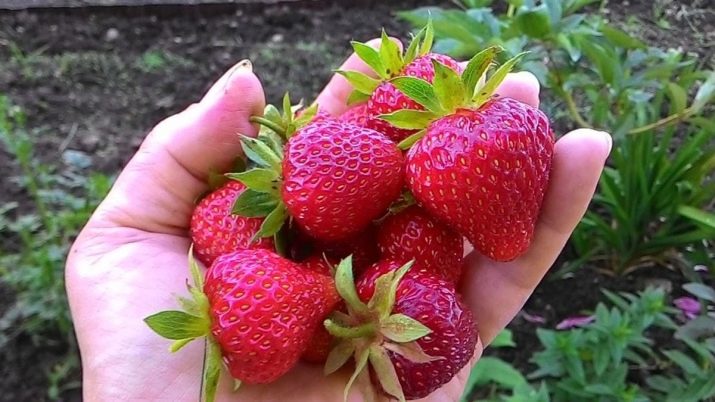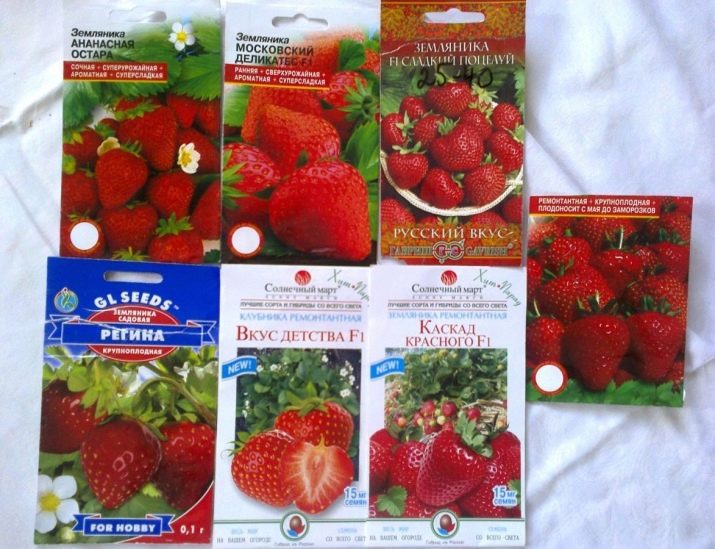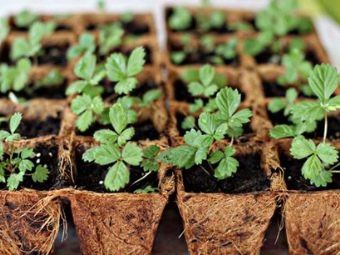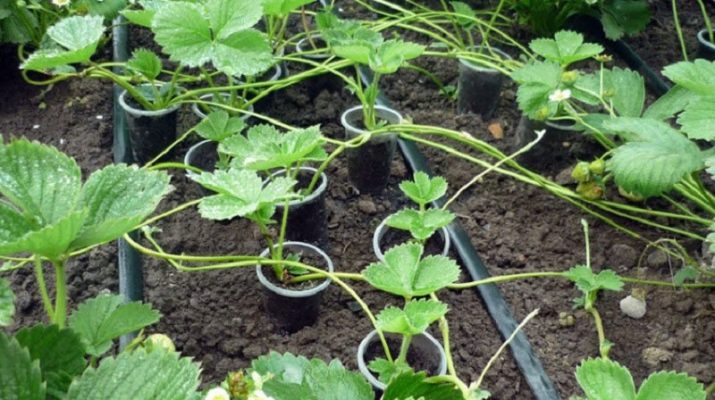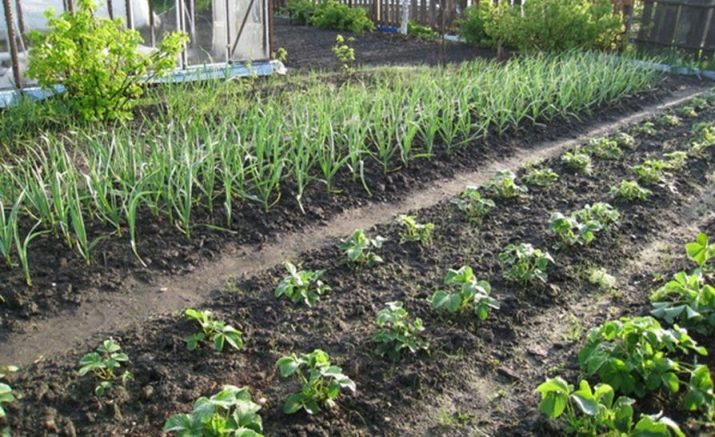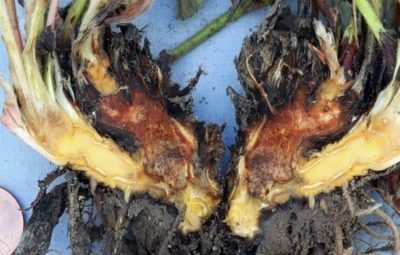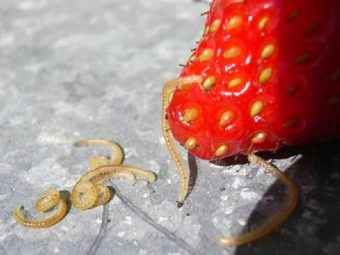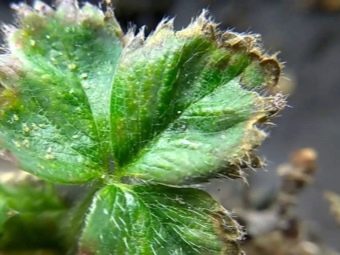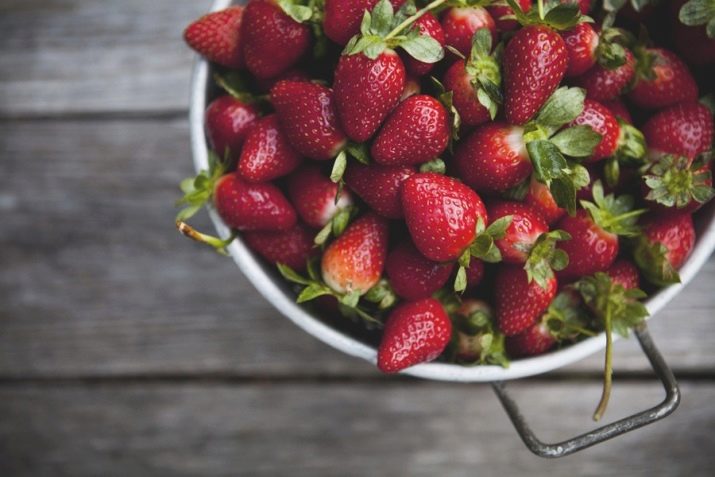Repair strawberry: what is it and how is it different from the usual?
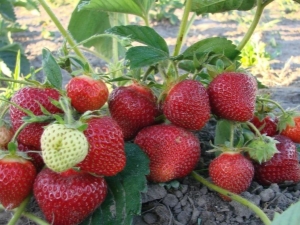
Strawberry is a berry, beloved by many of us since childhood.Most people associate summer with this berry. After all, it grows in almost every garden plot or cottage. But not all of their owners think about the types of strawberries, taking every crop as a given.
Consider remontant varieties of garden strawberries. We will explain what they are, how to plant them and care for them in order to collect the maximum yield.
general characteristics
First, let us examine the origin of the term "remontancy". This is a French word that can be translated as “repeat bloom”. Accordingly, remontant varieties are capable of producing several harvests per season.
Many gardeners who are interested in maximizing strawberry yields choose exactly remontant varieties. After collecting the first ripened crop, new flower buds are tied to them. And so on several times in one season.
This strawberry is divided into several subspecies, depending on its parameters. When buying seeds in specialized stores, you can find abbreviations of three letters on the package. This is what they mean:
- KSD - strawberry buds are formed with a short daylight;
- NSD - strawberry buds are formed with an average daylight;
- DSD - strawberry buds are formed with a long daylight;
Experienced gardeners recommend choosing unworking varieties, as they are distinguished by the highest level of harvests. Many remontant strawberry varieties have a mustache, but some have none. Accordingly, varieties can be:
- beardless;
- baleen
An inexperienced eye is unable to distinguish these subtypes from each other, but they have their own various advantages and disadvantages, which we will discuss later.
Differences from the usual form
The main difference is the ability to get several harvests in one summer. However, there are some less obvious features and traits.
An experienced gardener is able to understand the belonging only by looking at the bush of a remontant strawberry. After all, it looks a little different than ordinary. Their leaves are not so sweeping, and the density level is noticeably lower. The fruits are quite large, the weight of one can vary from 50 to 100 grams. In size, they are comparable to the berries of the variety "Victoria".
This kind of behavior also behaves slightly differently. For example, some large-fruited varieties may produce smaller berries in later years. And their bushes are aging much faster than conventional crops, due to frequent fruiting. Therefore, such strawberries need to be rejuvenated regularly. But this is only part of enhanced care.
If you want to get a really big and high-quality harvest, you have to spend a lot of time and effort. To maintain the remontant strawberries in its difficult task, it is necessary to water and feed the bushes much more often in order to provide them with moisture and plenty of necessary elements. We'll talk more about care and agricultural technology later.
Now about the main differences between baleen and bezusyh varieties. The first ones have fewer mustaches than ordinary varieties. Their main advantage lies in the fact that they begin to bear fruit a couple of months after planting. In the first summer you can get as many as two crops. At the same time, their berries are larger than those of wild bears. However, large yields can drain the bush so much that it will die at the end of the season.
Asexal varieties are distinguished by their high resistance and reduced care requirements. For example, they do not need any special place for growing. They do not need frequent transfers. They are immune to many common diseases. At the same time, smooth strawberries bear fruit without interruption. But these varieties do not tolerate heat and drought. In this weather, the bushes need to cover the shadow and water more often. A bush without a subspecies subspecies is not more than four years old.
Sorta
There are many varieties of remontant strawberries. Hardly less than the varieties of ordinary garden strawberries. We will tell about the most famous and common ones.
"Albion" is a really strong variety in every sense. Its bushes are highly resistant to pests, diseases and weather changes. They tolerate the winter well, in the southern regions of the country do not even need shelter. The berries are very dense, making it easy to transport. Even their appearance speaks of the severity of the variety. The color of large fruit is dark red.
"Elizabeth II" - differs in the largest berries. The mass of the smallest of them is 45 grams. And the largest can weigh as much as 125 grams. The flesh is very juicy, has an average density. However, the fruits are able to shrink with each new season, so the planting should be updated annually. The variety is unpretentious to the place of cultivation and begins to bear fruit in the first year.
"Evi 2" - the main advantage of this variety is a special fresh and sweet taste. And the pulp in juiciness is almost as good as “Elizabeth II”. In addition, the variety boasts its fertility. With a plot of 10 square meters can collect more than 50 kilograms of berries. One of them weighs about 20 grams. The shape is round, the color is bright red. Another advantage of "Evi 2" - resistance to drought.
"Diamond" - artificially bred grade. He was born by the efforts of agronomists from the University of California. Despite the fact that this strawberry was “born” in North America, it feels great in the climatic conditions of Eastern Europe. At the same time, both taste and performance are preserved. The mass of one berry is 18-21 grams. "Diamond" refers to the mustache subspecies and actively forms a mustache during the growing season. The main advantage of the variety is its resistance to many diseases and insects like ticks.
“Temptation” is another artificially produced hybrid. The berries are slightly larger than, for example, in “Diamond” - 32 grams on average. Juicy pulp has a high density. One bush is able to give about two kilograms of crop. One of the advantages of the variety is that its fruits grow quickly and ripen. The first berries reach ripeness after a month and a half after planting. Fruit "Temptation" until the first frost. The main feature of the variety is non-stop fruiting. After all, this process is not affected by the length of daylight. Therefore, in the winter you can grow this strawberry in a pot on the balcony.
"Moscow delicacy" - a variety designed for an average day length. The main advantage is high yield. Strawberry is able to bear fruit until frost. Fruit weight varies from 15 to 35 grams. The variety feels great on the territory of central Russia, as it is highly frost resistant. And he also has a high resistance to diseases. Interestingly, this strawberry has a taste of strawberries.
San Andreas is the youngest of all remontant varieties. It was bred by agronomists from the United States. Today it is considered the best and most promising in many countries of the world. Large berries have a pleasant aroma and a great sweet taste.
"Monterey" - another brainchild of agronomists from the University of California. His progenitor was the famous variety "Albion", which was described above. "Monterey" berries are large with juicy pulp. Form - oblong. The density of the berries is quite high so that they can be easily transported. And they can be stored for seven days without loss of external and taste. A distinctive feature of the variety - resistance to hot weather. Despite the high temperatures throughout the summer, Monterey can supply you with large yields.
Breeding methods
Repair strawberries, in contrast to the usual, needs constant rejuvenation. Therefore, the breeding process becomes an integral part of the annual care. There are several ways.
The first - seeds. The most difficult of methods. But provides gardeners with the largest number of healthy bushes.For wild breeds - the only way to breed. Seeds can be obtained from ripe berries.
For this purpose it is recommended to choose the largest and juicy fruits. Seedlings are usually planted in late February or early March.
The second is a mustache. As you can tell, is available only for a mustache subspecies. This method allows you to quickly get a lot of young bushes. This is a great advantage for rapidly aging varieties. Pay particular attention to the number of outlets. They should remain no more than three, the closest to the parent bush. But do not use a weak mustache. They must be completely removed so that they do not weaken the plants during the fruiting period.
The third is the division of the bushes. It is used in rare cases. For example, for urgent seedlings. For this breeding method, only strong and healthy bushes are suitable. However, not all remontant varieties can multiply in this way.
It is recommended to make additional inquiries about propagated strawberries.
Landing
Planting such varieties of strawberries can be both in spring and autumn. The main thing is to choose the most suitable site and prepare it in advance. If you are going to plant in the fall - prepare a place in the spring, and vice versa.
Many varieties begin to bear fruit in the first year. Therefore, in the southern regions of Russia, you can plant strawberries in early spring to get a quick harvest. In the central part, the soil after winter does not warm up so quickly, so it is worthwhile to give preference to the autumn landing.
To start the autumn planting should be in August and September, so that the strawberries have time to get stronger and adapt before the onset of cold weather. In this case, in the spring she will give the first harvests.
Agronomists recommend planting remontant garden strawberries on light soils such as sandy or loamy. The acid reaction should be weak or neutral. The beds must be made high so that the moisture in the ground does not stagnate.
And pay special attention to the culture that has been grown on this site before. Strawberries should not be planted in the places where they grew potatoes, cucumbers, tomatoes or cabbage. If carrots, beets, radishes, parsley or legumes were located at this place, it is, on the contrary, a big plus.
If a suitable site is selected, it’s time to move on to preparing it. Many people neglect this stage and get the corresponding sad result. Sachal land need to dig, simultaneously removing all the roots of weeds. Then fertilize the soil with organic matter. About one bucket per square meter. For these purposes, suitable mullein or humus. Additionally, add wood resin - five kilograms per square meter.
Four weeks before planting, the soil needs to be fertilized again. Prepare a mixture of 40 grams of superphosphate and 10 grams of potassium sulfate. Add one tablespoon per square. m
So now go to the main stage. It is worth noting that the rules of landing are the same for both seasons, spring and autumn.
On the eve of the landing, break the ground and prepare the pits. Calculate the depth based on the height of the roots, it should be several centimeters more. The distance between the rows should be at least 70 centimeters, and between each bush - 25 centimeters.
Spread a handful of earth at the bottom of each pit so that the roots spread out. At the same time try to avoid creases or excesses. After the powder, the ground must be compacted so that there are no voids left.
This should be done in the evening or in cloudy weather. Before planting, pay attention to the roots of seedlings. If there are any damaged ones or those whose length exceeds 10 centimeters, cut them off. And it will be useful to treat them with special mixtures for prophylaxis. After landing, water the bushes.
Care
If ordinary strawberries are quite durable and unpretentious, then remontant - very capricious and demanding. Such is the price for bulk yields. Get ready for regular care throughout the season.
First, a few facts:
- due to frequent fruiting, the bushes are severely exhausted;
- remontant varieties have an increased sensitivity to the quality of the soil and its moisture level;
- bushes such strawberries live no more than three years.
This is the main thing to consider when growing. By the way, the most preferred neighbors for strawberries are carrots, peas, radishes, lettuce or beans. And if you plant garlic between rows, it will scare away snails and slugs from berries. Next to plant a crop is not worth it, so it is with eggplant, cucumbers, potatoes or peppers.
The first thing the repair strawberry needs is abundant watering. Periodicity should be calculated so that the top layer of soil throughout the vegetative season remains wet and not covered with a dry crust. Watering can be done in two ways. Pour water into the grooves between the rows or from the hose by sprinkling.
The second, but no less important part of the care - feeding. It helps to nourish the weakening strawberries. It is recommended to use organic matter in liquid form. For these purposes, perfectly suited mixture of manure, bird droppings or urea (10 liters of the substance per liter of water). Make fertilizer need before flowering. Around the first half of June.
Do not forget about the transplant. Repair strawberries can grow in one place for no more than two years. It is advisable to replace it every year. Otherwise, due to the depletion of the soil, the size of the fruit decreases.
It is worth carrying out this procedure in August before autumn begins. Bushes will take time to adapt and prepare for the onset of cold weather. A new site must be prepared two weeks before transplantation, namely:
- dig, get rid of weeds and their roots;
- fertilize the soil with humus (one bucket per square meter) and phosphate preparations (30 grams per square meter).
After two weeks:
- mark up the site and dig holes (distances are the same as during the initial landing);
- move the bushes to a new site:
- spud;
- sprinkle a bed of sawdust;
- plenty of water.
Strawberry endures the cold winters of central Russia. But she needs special training. First cut late flowers. They still do not have time to ripen, but will take away the remnants of the forces from the plant.
Then it is recommended to feed strawberries. Fortified bushes better endure the winter. Use potassium phosphate preparations that can be applied both in liquid and dry form. And those who prefer folk methods can replace mineral substances with compost.
By the way, some varieties of long daylight may suffer due to early autumn frosts. Therefore, in September it is better to close them with agrofibre.
If winter is expected to be harsh and cold, the beds should be covered with straw, dry leaves or peat.
Diseases and Prevention
The repair strawberry suffers from the same ailments as the usual. Accordingly, the measures to combat them are the same. We will tell you more about the main enemies of this culture. Let's start with the disease.
- Mealy dew - A harmful fungus that can spread in various ways: through the air, with moisture or on foreign objects. It is a white bloom covering the stems and leaves, which is why photosynthesis slows down and the bush dies. The disease can be identified by dry twisted foliage and the modified form of the fruit. For the prevention of the disease, it is recommended to spray the strawberry with a soap-copper solution.
- Gray rot - A fungal disease, primarily affecting the roots of plants. Then goes to the top of them. Infected bush fades and perishes. At the same time, it becomes a distributor of infection. From such bushes should immediately get rid of. A healthy need to process fungicides. The risk of disease is reduced if strawberries grow in a well-ventilated area.
- Root rot - the fungus infecting damaged plants.The disease is dangerous because it can not be determined until the last moment. As the name implies, the roots rot first. The bush dries out in a short time. From infected plants need to get rid of as quickly as possible, and the soil under them watered Bordeaux liquid.
- Verticillary wilting - A disease that affects the vessels of plants. As a result, the color of the leaves changes to red-yellow or dark brown, and the bush fades. This fungus can infect almost any crop and even a weed. He can take away half the harvest.
But disease is not the only thing that can threaten your strawberries. Do not forget about the various insects. Here are some of the most common examples.
- Ants - eat both fruits and stems with leaves. You can get rid of them with the help of chemicals like Iskra or Fitoverma.
- Aphid - “pets” ants. These small insects feed on plant sap and spread various diseases. To deal with them, you must first get rid of their "masters".
- Nematodes - Worms of very small size. They can not be seen with the naked eye. They not only feed on the above-ground part of strawberries, but also inject poisonous liquid into the tissues, which can harm human health. Infected bushes can not be treated, they must be destroyed. Healthy need to process chemicals. Manure strawberry fertilizer reduces the risk of nematode attacks.
- Spider mite - small bugs, enclosing strawberry bushes with thin transparent threads. They feed on plant sap. The risk of attack is reduced if strawberries are processed with onion tincture. To get rid of this tick will help acaricides, for example, Apollo or Neoron.
Reviews
Experienced gardeners recommend choosing remontant varieties to those who are really interested in large volumes of harvest. Unfortunately, strawberries are not a berry that can be stored for a long time. Therefore, it needs a specific application.
In addition, choosing such varieties, you take on a great responsibility, because, as has already been said more than once, they require some effort.
But if you pursue certain goals that depend on large yields, then remontant strawberries are the best choice.
About the features of care for remontant strawberries, see the following video.


